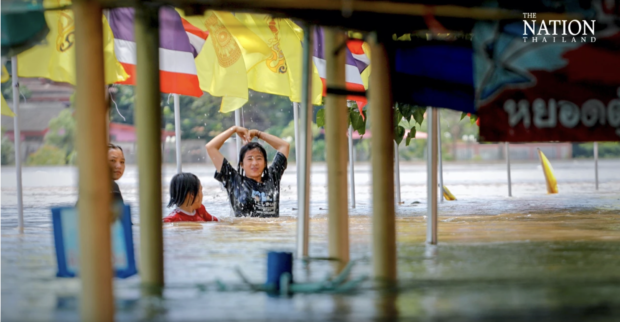
The Nation/Asia News Network
BANGKOK — Life in the Central region of Thailand should return to normal by mid-November as runoffs are expected to start easing soon, the National Water Command Centre (NWCC) said.
Surasee Kittimonthon, secretary-general of the National Water Resources Office and NWCC deputy director, said on Sunday that this forecast was based on the current level of rain and water discharged from big dams upstream.
He added that NWCC was cooperating with relevant agencies and using all possible tools, mechanisms and measures to speed up efforts to return normality to inundated provinces.
Surasee went on to say that the NWCC has been monitoring rainfall in the North, Central and Northeast regions and believes it will start easing and the dry season will start soon.
He added that the Chao Phraya and Ubolrat dams are also cutting down on releasing water, so flooding in downstream provinces should start easing soon.
Surasee added that Thailand had received about 295 millimeters of rain from January 1 to October 20, which is about 21 percent more than normal and 17 percent more than last year.
However, he said, it was still on average less than the rainfall in 2011 when Thailand was hit by massive floods.
Floods will last for at least 3 more weeks in Central Thailand, says NWCC
NWCC said this year, the water flowing through the C2 water station in Nakhon Sawan’s Muang district was recorded at 3,105 cubic meters per second, while the water flowing into the Chao Phraya Dam was 3,704 cubic meters per second.
The NWCC has to ensure the Chao Phraya Dam’s level does not go beyond 17.50 meters above the median sea level, but this year it rose to 17.74 meters. This is why NWCC had to speed up the water discharge to 3,180 cubic meters per second.
Surasee said downstream provinces ended up getting flooded because they can only cope with runoffs of 2,500 cubic meters per second.
As a result, the higher discharge made the Chao Phraya River and its tributary Noi River overflow and flood low-lying areas.
However, he said, the situation has started easing and the NWCC expects the Chao Phraya Dam to reduce its discharge rate to 1,200 cubic meters per second from November 20 and further reduce it to 700 cubic meters six days later.
He added that the floodwaters from Chai Nat, Singburi, Ang Thong and Ayutthaya provinces were moving towards the Noi River and further heading towards the Thung Phak Hai and Thung Pa Mok water-retention fields.
Meanwhile, the water level at the M7 station in Ubon Ratchathani province in the Northeast should start dropping by November 2 and return to its normal level within 14 days.
Surasee said satellite photos showed that about 8.7 million rai of land was inundated from October 1 to 20. He added that the government has allocated 6 billion baht to provide 3,000 baht in compensation to 2 million families affected by flood damage.
Compensation for damaged crops has yet to be surveyed and evaluated, he added.
RELATED STORIES
Starving Thailand monkeys invade homes after months of flooding
Volunteers rescue 50 wild boars from flooded Thai temple